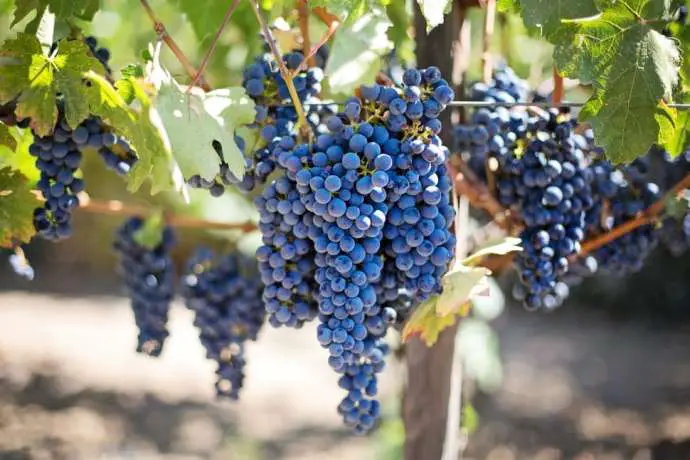STA, 7 November 2021 - Slovenia will produce 10-15% less wine than last year, mostly due to the Dolenjska wine region being strongly affected by the spring frost. However, wine growers around the country report it has been an above-average year in terms of quality.
The drop in quantity is also attributed to lower yields of certain varieties in the other two wine regions, but not as such as in Dolenjska, where only half of last year's production was achieved, Marjan Colja of the Wine Association of Slovenia has told the STA.
Colja, the director of the wine producer Vina Kras, noted that the production was close to normal in the western region of Primorska, while the Kras area had been affected, not by frost but by wild boars and birds.
Wine growers are nevertheless more concerned about the quality of wine than about reaching records in terms of quantity as competition in the market is fierce and demand has dropped due to the Covid-19 pandemic.
Weather conditions were favourable ahead of the harvest, with the sunny and not so cold weather being very useful. Colja noted that wine growers around the country reported that it was an above-average year in terms of quality.
The largest Slovenian winery, P&F Wineries, said that despite the very demanding spring and damage done by the frost, the quality of wine was the best in the last 12 years according to preliminary estimates.
In addition to the lower production, wine growers and wine makers have also been affected by coronavirus restrictions, as public lockdowns resulted in lower sales to hotels and restaurants.
Another blow comes as the majority of celebrations of St. Martin's Day around Slovenia have been cancelled due to growing infection numbers, including the largest event in Maribor. "The closures certainly bring nothing good," Colja said.
According to him, some wine cellars decided to distil excess wine, which is being supported by the state. "However blasphemous this may seem to a wine maker, it is still better to make something useful ... than sell at dumping prices."
Colja added that the major winery companies had been generous this year to grape producers and had been ready to raise the purchase prices of grapes, which he believes was the right decision.
While it is not easy to sell wine either in Slovenia or abroad, he noted that exports were still a problem, in particular to the Chinese market, the reason being that there are fewer fairs and opportunities for promotion due to the pandemic.
Colja said that the state had the key role in promoting export activity, and that wine makers were perhaps subjected to too many restrictions. "Many prefer not to use state funds because they don't want to have administrative problems."
According to the Agriculture Ministry, between 80 and 90 million litres of wine is produced in Slovenia annually by more than 2,500 registered wineries that bottle their own wine. Eleven producers make more than half a million litres a year.
The ministry has told the STA that experts of the Chamber of Agriculture and Forestry had estimated that this year's production will amount to around 55 million litres of wine.
Vineyards in Slovenia are located on steep slopes, which means very expensive production, but also good quality, with quality wines representing as much as 70% of total output.
The total land area covered by vineyards has not changed significantly in recent decades. It was increasing until 1996, after which it started to decline slightly. Compared to 2010, the land area covered by vineyards today is 5% smaller.
Last year, the average price of wine with the Slovenian geographic origin sold in Slovenia and in the EU markets was down for all categories of wine compared to 2019, while sales were up by 6%, with sales of wine for distillation included.
Slovenia mostly imports wine from North Macedonia, Italy, Germany and Hungary, while it exports its quality wines to Germany, Croatia, the US, the Netherlands, Bosnia-Herzegovina and, in recent years, to the Czech Republic.






